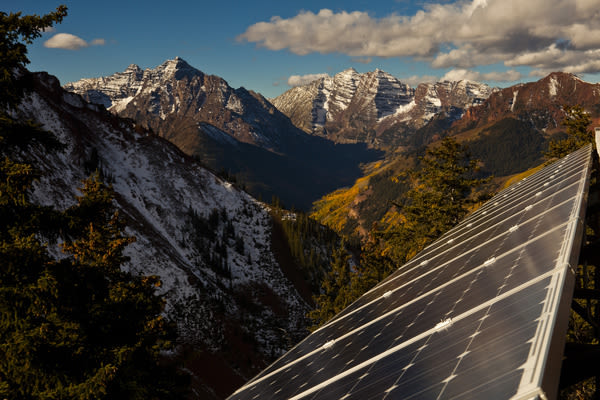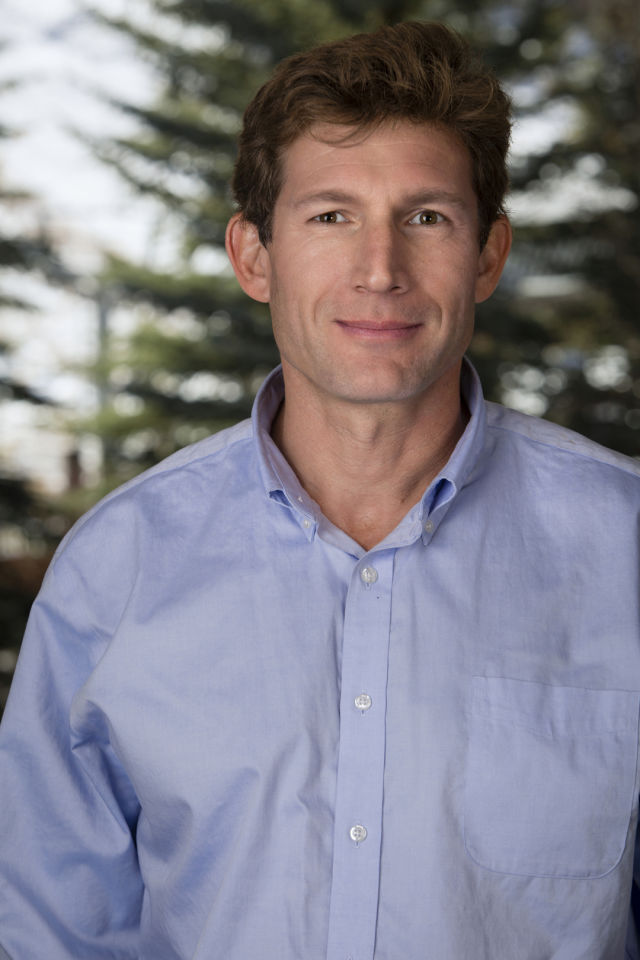The Greenest in the Biz: How Aspen Sets the Sustainability Standard

In 1996, when Pat O’Donnell became chief executive of the Aspen Skiing Company, ski areas generally held themselves in high environmental regard. They had neither smokestacks nor slag piles. Their “product” was access to fresh-fallen snow and relatively pristine nature. But O’Donnell knew better. He’d been an executive at ski areas in British Columbia and elsewhere in Colorado. He had also served as chief executive of Patagonia, the manufacturer of outdoor gear. As a young man, he had grounded himself in climbing Yosemite National Park’s big rock walls.
In Aspen, O’Donnell took a page from his work at Patagonia, setting up a sustainability department. That was in 1997, when such entities were rare, if not altogether nonexistent, among ski area operators. Chris Lane, an environmental engineer and former Sierra Club employee, was O’Donnell’s choice to lead this pioneering effort.
Aspen’s diehard environmentalists suspected greenwashing. “How do you sleep at night?” one of the community’s wilderness matriarchs asked Lane. It wasn’t a groundless question. “Anyone who thinks that the ski industry is a clean business is kidding themselves,” says Lane. “It has impacts, just like anybody.”
Nonetheless, he set out to reduce those impacts. The company bought wind energy. It embraced more efficient snowmaking systems. While renovating the Sundeck, SkiCo hewed to a new green-building standard; the resultant structure was among the nation’s first 10 LEED-certified buildings.
In putting the health of the planet on par with profits, Lane had a top-down mandate. But he also needed grassroots buy-in. One of his proudest accomplishments was creating an environmental fund through which SkiCo matches employee contributions. Employees determine which local environmental efforts will benefit. “It has given away millions of dollars. Employees love it,” says Lane, now the chief executive officer of the Aspen Center for Environmental Studies.
Aspen’s efforts got noticed in the ski industry. Arthur De Jong, then the mountain manager at Whistler Blackcomb, recalls thinking, “These are principled and committed people.”

Auden Schendler, Vice President of Sustainability, Aspen Skiing Company
After four years, Lane handed the reins to Auden Schendler, his no. 2, who has continued the company’s cleanup of its own locker room. Schendler also looked to creatively leverage SkiCo’s money. Several years ago, for example, the company delivered the financial subsidy needed to burn methane, a powerful heat-trapping greenhouse gas that was escaping from a coal mine 80 miles west of Aspen, to produce electricity. The process does yield carbon dioxide, but there’s a net greenhouse reduction.
Influenced by Schendler, SkiCo has also leveraged its internationally prominent brand to lobby for broad environmental policy reform, filing amicus briefs in US Supreme Court cases and sending Mike Kaplan, the CEO since 2006, to testify before Congressional committees. It was also among several dozen ski companies that appealed to then-President-elect Donald Trump in a November letter to make good on US climate change commitments pledged in Paris.
Along the way, there have been a few hurdles. Schendler’s robust evangelism is best understood by fellow believers, though he seems to have learned greater patience in communicating his message. Then there’s the perceived disconnect between sustainability and the great wealth to which Aspen caters. “Another ‘carbon neutral’ Gulfstream 550 just landed in Aspen carrying two people and a poodle,” prickled one recent Facebook post. “It’s OK, though, because they advocate for Protect Our Winters.”
And there’s an inherent tension between SkiCo’s environmental aspirations and its immediate task of delivering customer-satisfying experiences. Schendler wrote a book, Getting Green Done, which explores this struggle, presenting the long view along with the small steps necessary to get there.It helps that Schendler has an uncommonly thick skin. “Look, we’ve never said that people need to stop using fossil fuels and freeze in the dark,” he responds. “Rather, we’re saying we need to find another way to power our economy. The ski industry is just one carbon-intensive piece of a carbon-intensive society. We’re advocating for decarbonization, not asceticism.”
By now, SkiCo’s sustainability efforts have gained attention far beyond the ski industry. Andrew King, a professor of business administration at Dartmouth, says the Aspen experience is taught in at least a dozen business schools across the country, including Harvard, which commissioned a four-part case study. “The Aspen Skiing Company is showing how firms can look past their corporate fence line and influence practices throughout the economy,” he says. “Auden’s honesty has inspired business thought leaders around the world.”
But sustainability still isn’t easy. In December, SkiCo opened a new Limelight Hotel near Sun Valley. It achieved only a silver LEED certification, two steps down from the top-notch platinum ranking. Says Schendler, “It’s a good reminder that we dwell in the space between dreams and reality.”
SkiCo Sustainability by the Numbers
The Protect Our Winters logo is applied to all 3,800 SkiCo uniforms to tout the partnership with this national climate nonprofit.
SkiCo released the ski industry’s first sustainability report in 1999.
In two retrofits of lighting in The Little Nell’s garage—the first in 2001, the second in 2016—wattage plummeted from 400 to 22 per light bulb, with no decline in visibility.
The ski industry’s first solar array was erected at Aspen Highlands in 2004.
SkiCo owns three facilities that generate electricity in three ways: solar, micro-hydro, and coal methane conversion.
Sustainability goes beyond environmentalism to embrace other aspects of community: SkiCo also supports the Aspen Community Foundation’s Cradle to Career Initiative, giving funding assistance for mobile preschools and college counselors in local high schools, among other programs; helped fund a school health clinic in Basalt; and raised more than $55,000 for the Aspen Homeless Shelter through a benefit dinner and a BBQ cook-off.













































